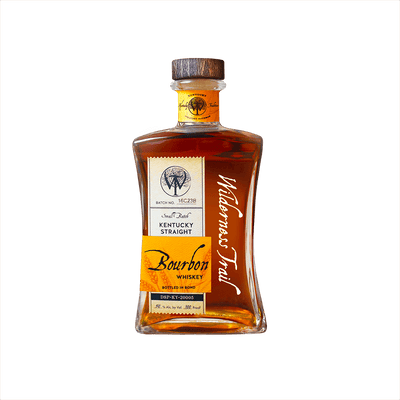Wheated Bourbon
What is Wheated Bourbon?
Wheated bourbon is a distinctive style of Bourbon Whiskey that uses wheat as the secondary grain in its mash bill instead of the traditional rye. This substitution creates a softer, sweeter profile with less spice and more rounded flavors compared to rye-heavy bourbons. The wheat component typically makes up 10-20% of the grain recipe, resulting in whiskeys known for their smooth, approachable character and often featuring notes of vanilla, caramel, and honey.
Learn More About Wheated Bourbon
What makes Wheated Bourbon unique?
Wheated bourbon swaps out the traditional rye grain in its mash bill for wheat, creating a distinctly softer and smoother drinking experience compared to high-rye bourbons that tend to be spicier and more aggressive. This substitution gives wheated bourbons their signature creamy, almost velvety mouthfeel with subtle vanilla and honey notes that make them incredibly approachable for both newcomers and seasoned drinkers. Famous examples like Maker's Mark and the coveted Pappy Van Winkle lineup showcase how wheat transforms the bourbon profile into something gentler and more refined than their rye-forward cousins.
How is Wheated Bourbon made?
Wheated bourbon starts with a mash bill that swaps out the typical rye grain for wheat as the secondary grain, creating a softer, sweeter flavor profile alongside the required corn and malted barley. The wheat content usually runs between 8-20% of the total grain recipe, and this substitution happens right at the beginning during the mashing process where grains are mixed with water and heated to convert starches into fermentable sugars. From there, the production follows standard bourbon protocols - fermentation, distillation, and aging in new charred oak barrels for at least two years, but that wheat foundation creates a distinctly mellow character that sets these whiskeys apart from their rye-heavy cousins.
How do you drink Wheated Bourbon?
Wheated bourbon shines brightest when sipped neat or with a single large ice cube, allowing its signature smooth, sweet character to take center stage without interference. The wheat's mellow influence makes these bourbons perfect for classic cocktails like Old Fashioneds and Manhattans, where their softer profile won't overpower other ingredients but still provides substantial backbone. While some folks enjoy wheated bourbon in shots, you're really doing yourself a disservice – these bottles deserve to be savored slowly, especially during cooler months when their rich, comforting flavors pair beautifully with fireside contemplation or holiday gatherings.
How do I choose good Wheated Bourbon?
When selecting a wheated bourbon, look for bottles that balance the wheat's inherent softness with enough proof and age to provide complexity—brands like Maker's Mark, Larceny, and Weller offer excellent entry points at different price ranges. For sipping neat or on the rocks, opt for higher-proof expressions or those aged longer, as the wheat's mellow character benefits from extra strength and time in the barrel. If you're mixing cocktails, standard-proof wheated bourbons work beautifully in classics like Old Fashioneds and Boulevardiers, where their smoother profile creates a more approachable drink that won't overpower other ingredients.
Nutritional Information
Typical Calorie Range per Ounce: 64-70 calories
Typical Carbohydrate Range per Ounce: 0-0.1 grams
Typical Sugar Range per Ounce: 0 grams
Typically Gluten Free: No
Wheated bourbon contains wheat as a flavoring grain in its mash bill, which means it contains gluten proteins. While the distillation process removes most gluten proteins, trace amounts may remain. People with celiac disease or gluten sensitivity should exercise caution. Always check the specific product label and manufacturer information to confirm gluten content, as production methods and ingredients can vary between distilleries.
Scrolled this far? Your reward? Wheated Bourbon Trivia!
- The infamous "Pappy Van Winkle heist" of 2013 involved thieves who specifically targeted wheated bourbons because they knew which barrels contained the most valuable liquid. The criminals made off with $100,000 worth of premium wheated bourbon, proving that even seasoned whiskey thieves understand what separates the good stuff from the rest.
- Maker's Mark was the first distillery to intentionally rotate their barrels during aging specifically because wheat-based mash bills mature differently than rye-heavy recipes. The wheat creates less tannin extraction, so they needed to move barrels around their rickhouses to achieve proper flavor development - a practice that's now become standard across the industry.
- Wheated bourbon actually contains a higher concentration of congeners (flavor compounds) than traditional rye bourbon, but these congeners are different molecules entirely. While rye creates spicy phenolic compounds, wheat generates sweet esters and aldehydes that survive the distillation process, which explains why wheated bourbons taste "softer" even at the same proof.
- The reason wheated bourbon disappeared for decades wasn't due to taste preferences - it was because wheat was rationed during both World Wars for bread production. Distilleries were forced to use rye as their flavoring grain, and an entire generation of distillers forgot how to properly manage wheat-based fermentation until Bill Samuels Sr. rediscovered the techniques in the 1950s.
- W.L. Weller, the man behind the famous wheated bourbon brand, never actually drank his own whiskey. He was a teetotaler who built his reputation by selling "honest whiskey at an honest price" during an era when most bourbon was adulterated with additives. His wheated recipe was specifically designed to taste smooth enough that customers wouldn't suspect it had been tampered with - ironic, considering it's now among the most sought-after spirits in America.
Higher-proof spirits can be intense. Mix carefully, taste thoughtfully, and enjoy responsibly.
Gift message (optional)


